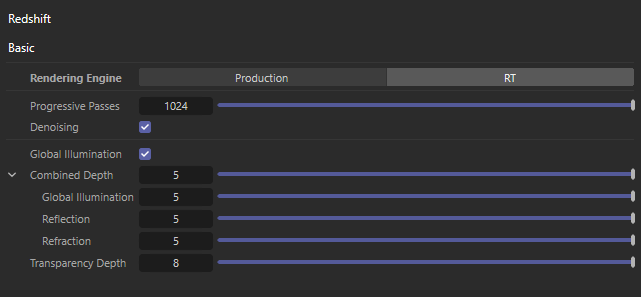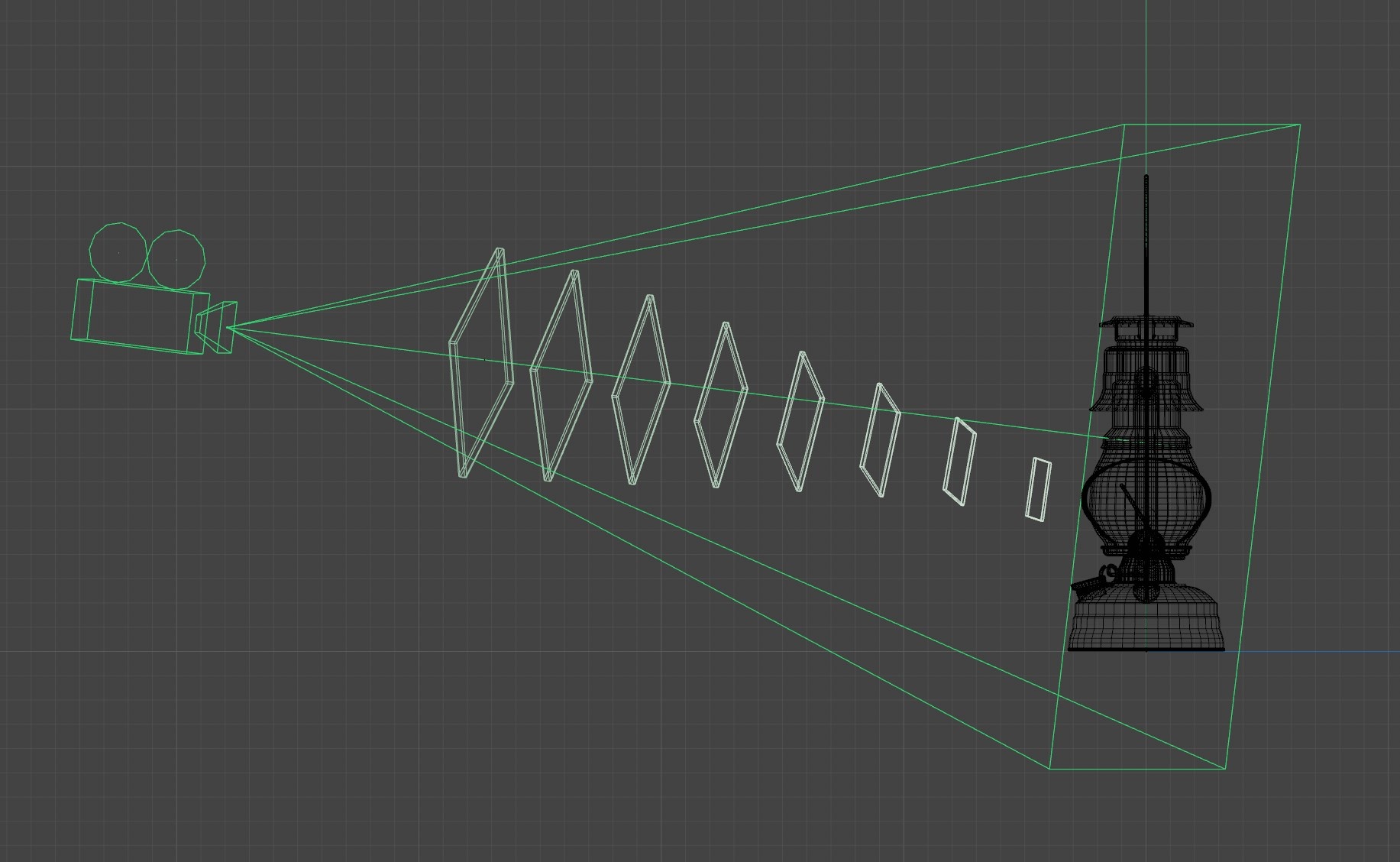
Table Of Contents

|
The render settings that are available to you changed based on the selected render settings mode (Basic or Advanced) and the selected rendering engine (Production or RT). Basic mode consists of a small selection of frequently used render settings while Advanced mode exposes all of the available render settings for the selected render engine. If you're just getting started with Redshift, or prefer to keep things simple, the Basic mode is a great way to adjust your render quality.
The settings on this page are available when rendering with Redshift RT in Basic mode.
Example images are rendered with Redshift Production but the visual impact remains the same in RT.
Changing this parameter will change the render settings that are available.
Controls which engine is used for rendering from the following options.
Production: Redshift Production, Redshift's primary engine for final frame rendering.
RT: Redshift Real Time, Redshift's fastest interactive engine, offering near real time updates.
Controls the maximum number of passes that Progressive rendering mode can reach and therefore controls the maximum achievable visual quality of Progressive mode. The higher the number of Progressive Passes the higher the render quality and the less visual noise, default is 1024 passes.
Since Progressive mode can be used in either Interactive Rendering or Final Rendering the behavior of this setting differs depending on the rendering mode and the situation.
Setting only applies to Production Progressive and RT rendering mode.
The Denoising checkbox allows you to quickly toggle denoising on and off. Denoising allows you to easily render images at a reduced baseline quality (lower sample counts) and increased speed at the expense of some potential accuracy. Denoising can only do so much and a balance must be struck between Bucket Quality and the denoiser engine of choice in order to find what works best for your project.
The Global Illumination checkbox lets you quickly toggle bounced indirect lighting on and off. For the most realistic lighting Global Illumination should be left enabled but it will increase render times. For more information please see this page.
By default Basic mode uses a combination of Brute Force for primary bounces and Irradiance Point Cloud for secondary bounces.
In the example images below notice how the bounce lighting from the floor and wall next to the lantern is realistically filled in when Global Illumination is enabled.
|
|
|
| Global Illumination: Disabled Render Time (Min:Sec) : 2:59 |
Enabled 3:17 |
Depth parameters control how many times a ray of its individual type can interact with objects in a scene until it is terminated.
The Combined Depth parameter specifies the maximum number of times any individual ray can be used for global illumination, reflection, transmission / refraction, or volume scattering. Even if the depth values for an individual ray type is higher than the Combined Depth the resulting render will still be capped at the Combined Depth value.
Separating the controls like this provides more flexibility, allowing individual effects to be rendered with increased depth when needed but restricting unnecessarily high render times. For example, let's say that reflection and refraction are both set to a value of 4 and combined is set to 6. If a ray had already been reflected 4 times, then it could only be refracted 2 more times because the combined trace depth is 6.
Increasing Depth values can quickly and greatly increase render times in scenes with many bounces. In general it is best practice to the lowest depth values that still allow for the desired render, higher depth values provide more realism at the expense of render times.
The Global Illumination Depth parameter sets an individual cap on how many times an indirect lighting ray can bounce. Increase this parameter for interior scenes where many indirect bounces are required for realistic lighting.
The Reflection Depth parameter sets an individual cap on how many times a reflection ray can bounce.
The Refraction Depth parameter sets an individual cap on how many times a refraction ray can bounce or pass through objects.
The Transparency Depth parameter sets an individual cap on how many times a transparency ray can pass straight through objects. Transparency is utilized for things like Opacity in the Redshift Material to go much deeper than complex refractions and render much faster than refractions.
Transparency Depth is not limited by the Combined Depth parameter.
The test scene below was modified specifically to demonstrate the impact of the depth settings by putting 8 panes of glass in a row in front of the camera. Each pane of glass has actual thickness so for a ray to fully pass through one it requires a trace depth of at least 2, since there are 8 panes of glass a minimum trace depth of 16 is required to see through all 8 panes. See below that the glass on the lantern is not even visible until the refraction trace depth is high enough to get through all 8 panes of glass and the lantern glass itself. These same limitations are imposed on each ray type by their individual caps as demonstrated in the last example where the Global Illumination and Reflection Depths are reduced well below the Combined Depth resulting in the loss of most of the reflections and global illumination.

|
|
|
|
|
| Combined Depth: 6 Global Illumination Depth: 4 Reflection Depth: 4 Refraction Depth: 6 Transparency Depth: 16 |
8 6 6 8 20 |
24 20 20 24 48 |
24 1 1 24 48 |